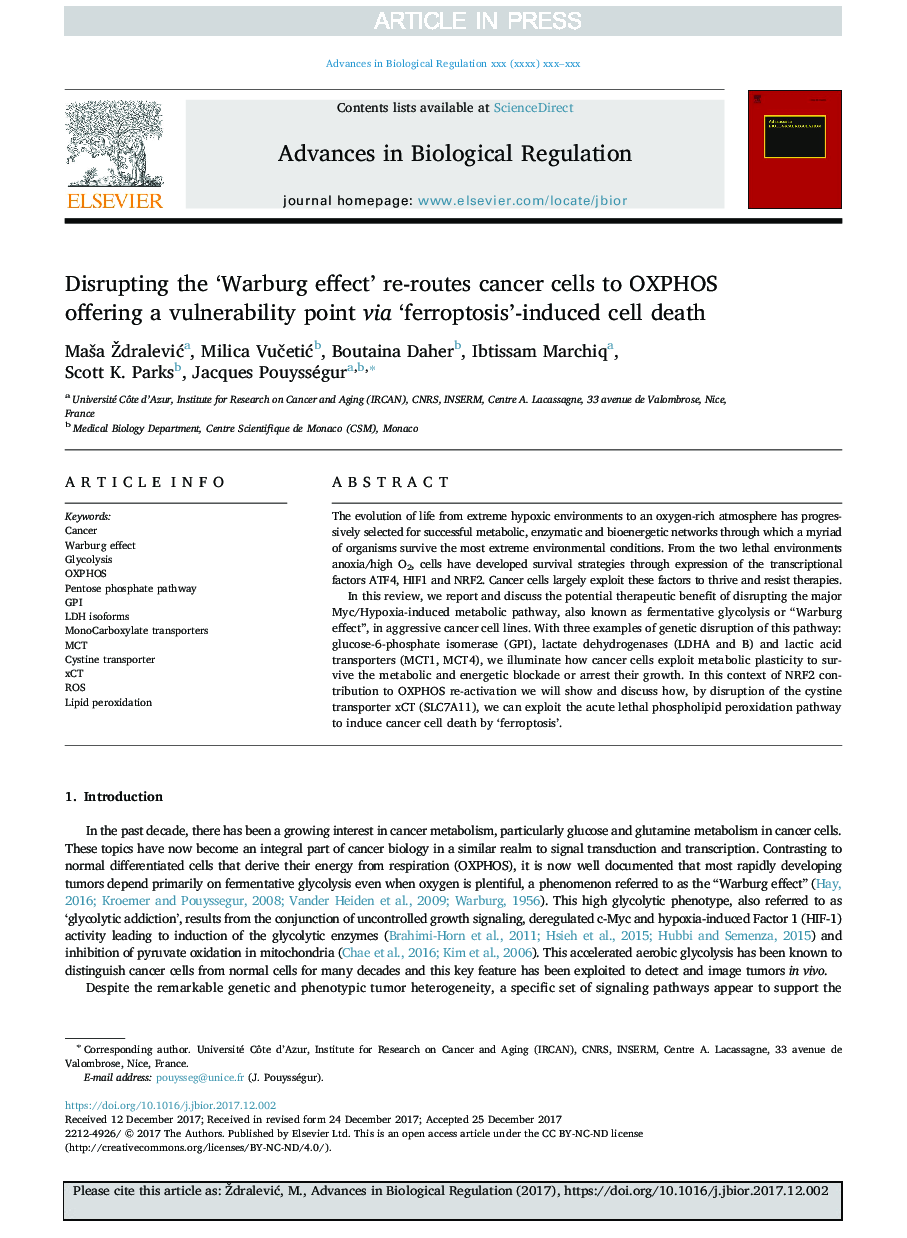| Article ID | Journal | Published Year | Pages | File Type |
|---|---|---|---|---|
| 8287687 | Advances in Biological Regulation | 2018 | 9 Pages |
Abstract
In this review, we report and discuss the potential therapeutic benefit of disrupting the major Myc/Hypoxia-induced metabolic pathway, also known as fermentative glycolysis or “Warburg effect”, in aggressive cancer cell lines. With three examples of genetic disruption of this pathway: glucose-6-phosphate isomerase (GPI), lactate dehydrogenases (LDHA and B) and lactic acid transporters (MCT1, MCT4), we illuminate how cancer cells exploit metabolic plasticity to survive the metabolic and energetic blockade or arrest their growth. In this context of NRF2 contribution to OXPHOS re-activation we will show and discuss how, by disruption of the cystine transporter xCT (SLC7A11), we can exploit the acute lethal phospholipid peroxidation pathway to induce cancer cell death by 'ferroptosis'.
Keywords
Related Topics
Life Sciences
Biochemistry, Genetics and Molecular Biology
Biochemistry
Authors
MaÅ¡a ŽdraleviÄ, Milica VuÄetiÄ, Boutaina Daher, Ibtissam Marchiq, Scott K. Parks, Jacques Pouysségur,
